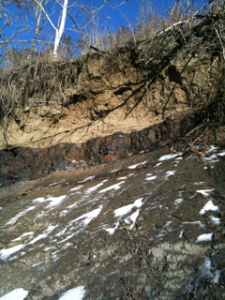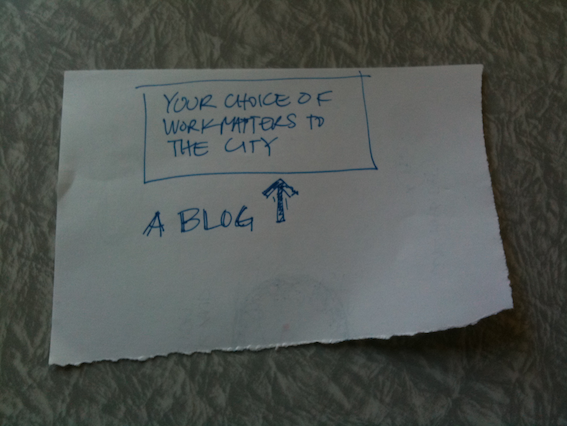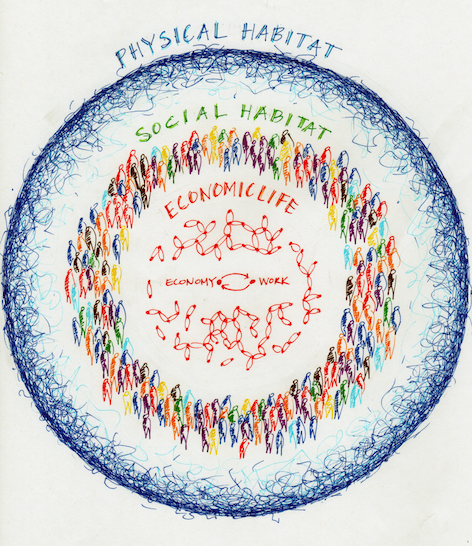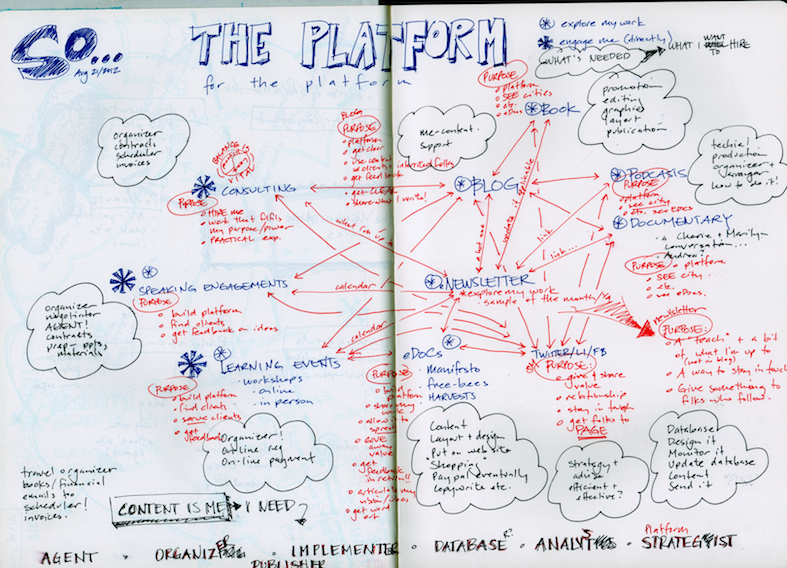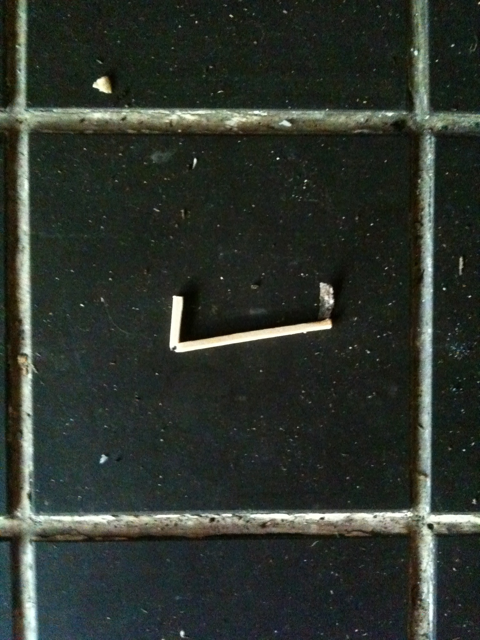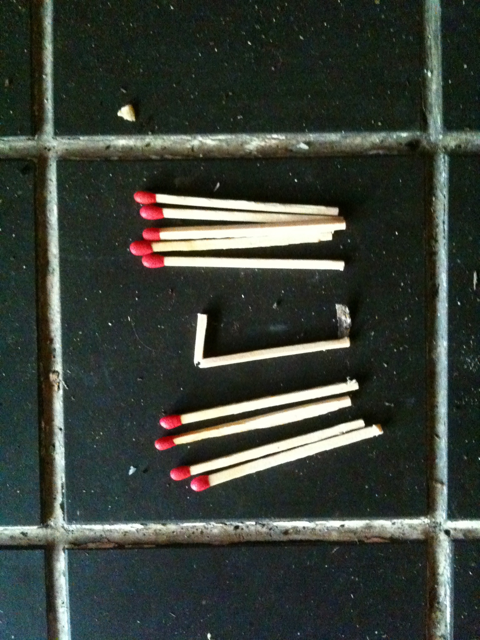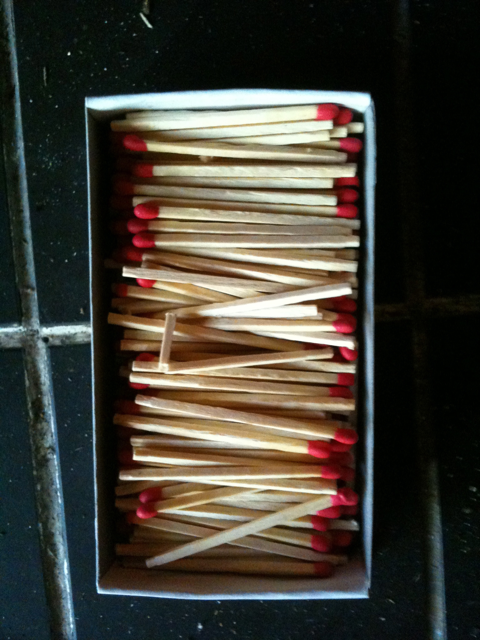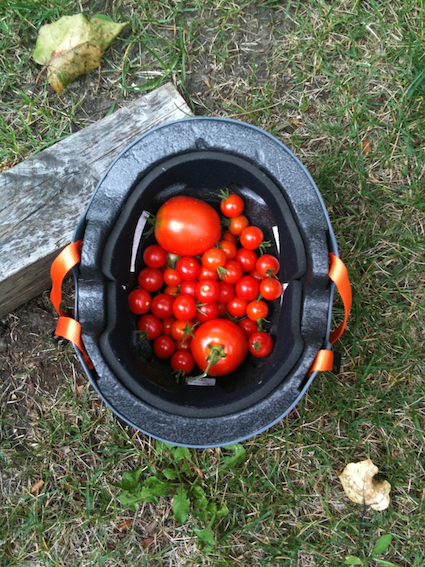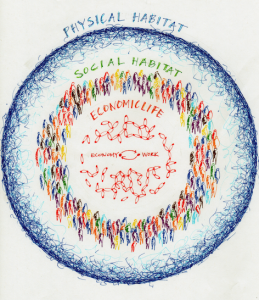My intention for last week’s writing retreat was to define, describe and discern. I just didn’t define, describe and discern what I expected. I had to retreat from the retreat.
I had a destination in mind: chapter 1 of Nest City would be tight and clear; my book proposal reworked; and clear sense of what a ‘Nest City Manifesto’ would look like. I stalled out on the first. Wednesday night I made my way to Strawberry Creek Lodge, settled in, and paused to think about what I wanted to accomplish. Thursday morning I joined my writing colleagues for breakfast, left the table as soon as I was fed and headed outside into the icy, cloudy day for some fresh air and a visit to the creek, before dropping into the task at hand. I worked feverishly. I recorded exact time spent sitting and writing – 10.25 hours. By bedtime I was exhausted, but still giving myself enough time to sleep so my body would be ready for more writing on Friday.
Friday was more of the same until, after an afternoon run, I sat down with my journal because things weren’t feeling right. I see now that the land I explored that morning at the top of the valley’s bank, really was subsiding. I did not register that the shaky ground I saw that morning was shaking within me.
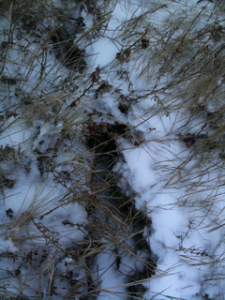
To explore the tension I decided to try something new. I drew three oracle cards: the first to articulate the situation at hand, the second to reveal what I am missing, and a third to point to my Soul’s most pressing assignment in the moment. The three cards: accept what is, retreat, and nurture yourself first. The message – accept the struggle, I am missing the retreat (at the retreat!) and a pressing need to nurture myself.
Stunned. I could not wrap my head around the “what is” that needed accepting. I could not get my head around what it could possibly mean to be missing the retreat. I could get my head around looking after myself, and I could get my heart engaged in looking after my Self, my inner Being that needs to be well for me to be well.
So I went rogue at the writing retreat and stopped writing.
I went to meditate with trees as the sun set.
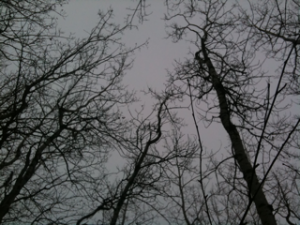
I strolled through the forest, noticing the circle of life and decay, both vibrant and full of energy. I noticed a trail I hadn’t seen before, despite having passed it innumerable times, leading down to the creek. After a few steps I was spooked by a structure, on the surface of the land, caved in, screaming danger. I walked back up the hill and abandoned my quest to explore a new part of the valley.
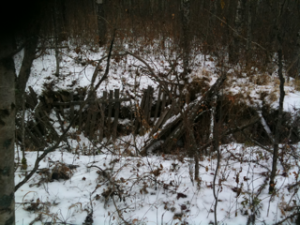
After a few paces along the familiar trail, I realized I was unsettled, that I needed to go back to the unexplored path and investigate, peek around the corner for a look. I steeled myself and went back for a closer look, from a distance. As I reflect on this, I see that this was Saturday’s reminder that I was on shaky ground. That the ground could drop out from underneath me at any moment.
I went on an analog quest: a long walk to find my road, and time with my little red notebook.
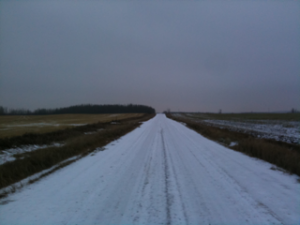
I spent time with words, contemplating the meaning of key words in my writing: habitat, nest, conglomeration, conglomerate, conglomeration, hive, conglutinate. I played with words that connect to the writing to come: manifest, manifesto, proclaim, declare, display, exhibit, voice, perspective, whole, holon, view, role, inhabit, inhabitants. I sketched what I saw in the forest – the habitat and its inhabitants. At last, some insight into questions I have been sitting with for a couple years, began to emerge.
I have been pondering how my writing and my corporate, work identity intermingle. It seems simple now. My work out in the world takes place through POPULUS; it is a forest habitat for many nests, one of which is the Nest City Blog. Over time, I will have Nest Publications, articulating ways to work in the world and how I see cities working in the world. Each of these will have their own life, first in the immediate nest habitat in the POPULUS forest, then further afield when they leave the nest.
A second, big question has been looming about my relationship with readers/followers. I have been explicitly sharing bits of the emerging book. I have made commitments to share what I see here, with you, without contemplating fully what I expect in return. While I believe I receive much in giving freely, without explicitly naming what I ask for in return leaves me, with a deep and significant energy imbalance.
So here is the transaction underway. I give content, awareness, and understanding about the relationship between cities and citizens. I give my time where asked. In return, I am given opportunities to work with passion. I receive feedback about the value of what I offer, and what specifically is of value so I can, where passion aligns, provide more value. I receive what I need for this work, in money and otherwise. This whole dynamic allows me to see where this work wants to go, where it wants to take me, what I need to do to best support it. I am a nest within which this work is unfolding. I am the work’s immediate habitat, and also a creator of the habitat further afield in the forest. If I am not well, I can not look after the work well.
So the retreat was a retreat into me, not writing. Yet all about writing in the end, since I am the writer.
Before I left, the sun came out and I could see what was happening under the riverbank. It was giving way to Me.
